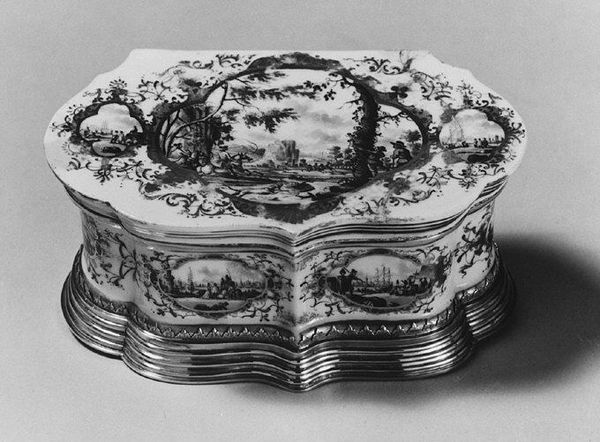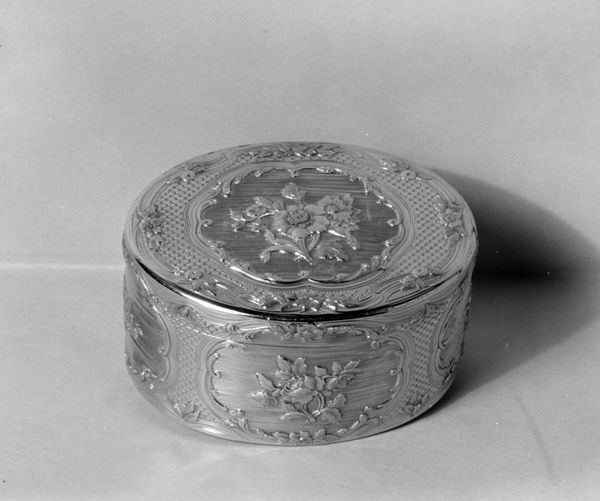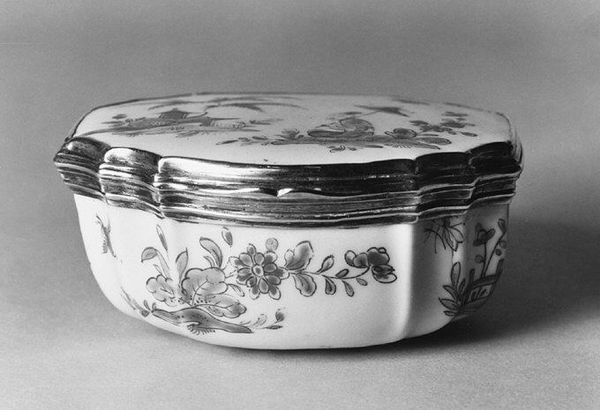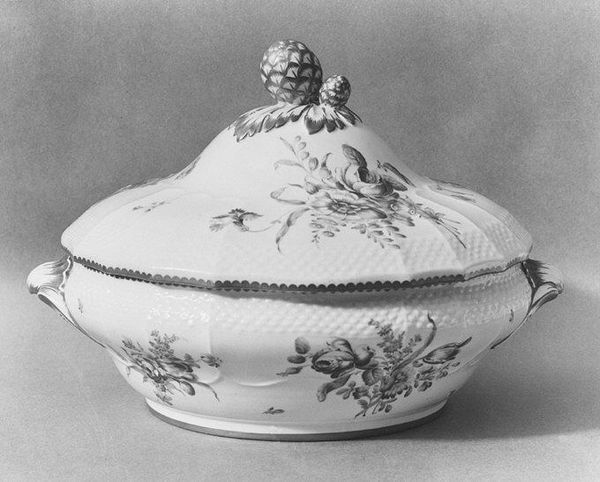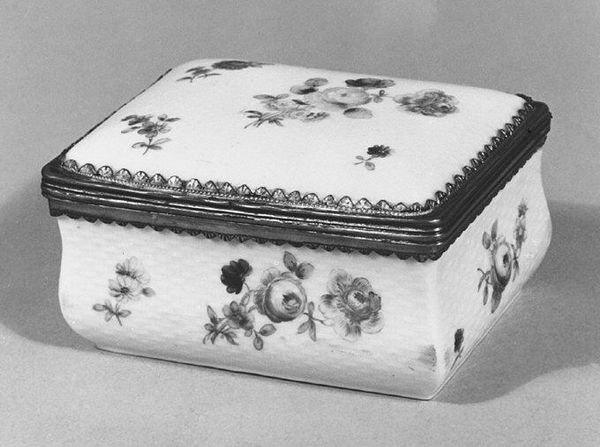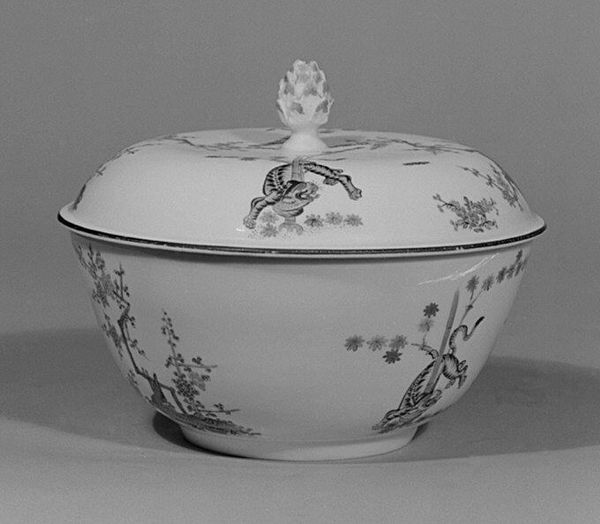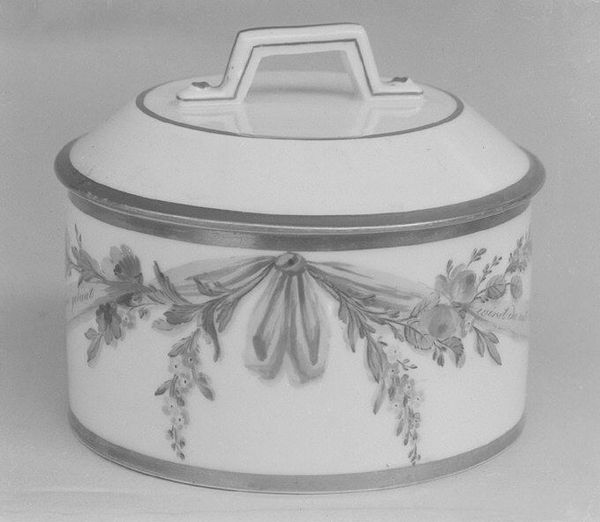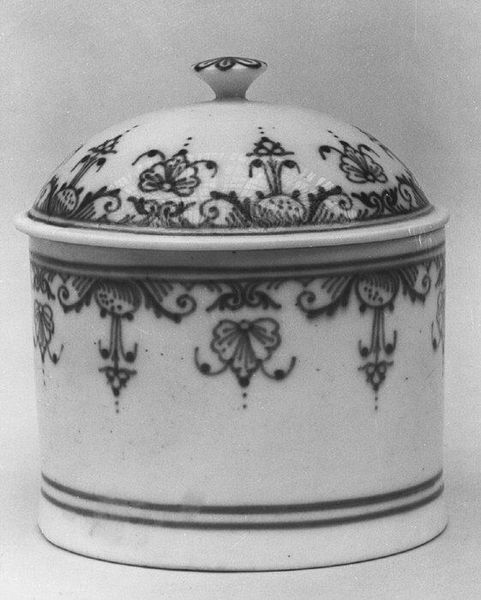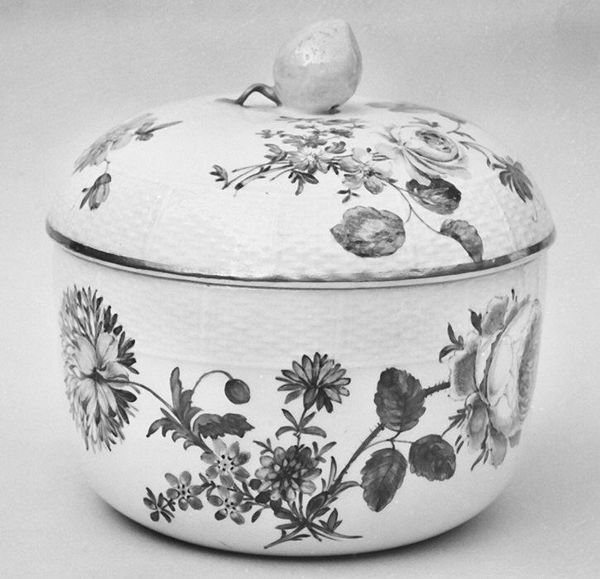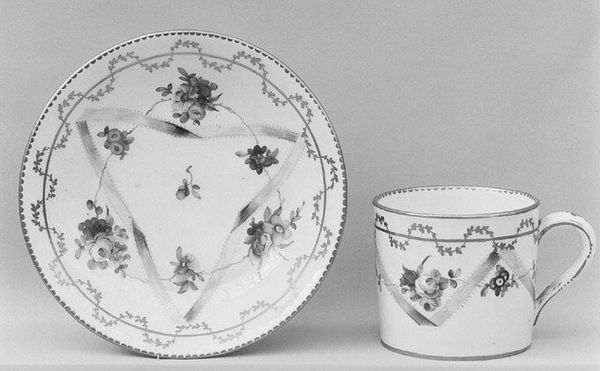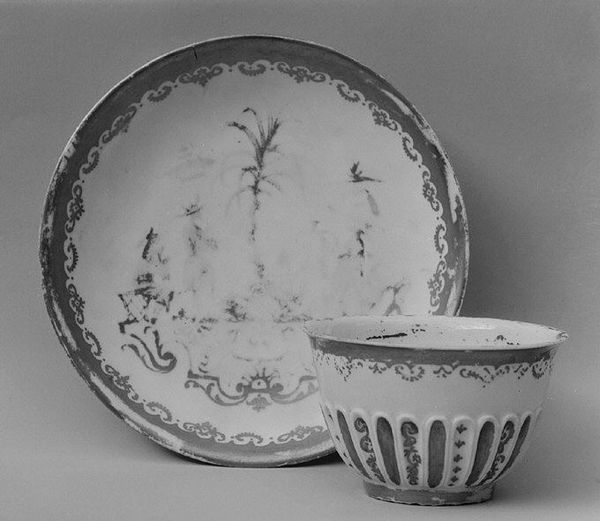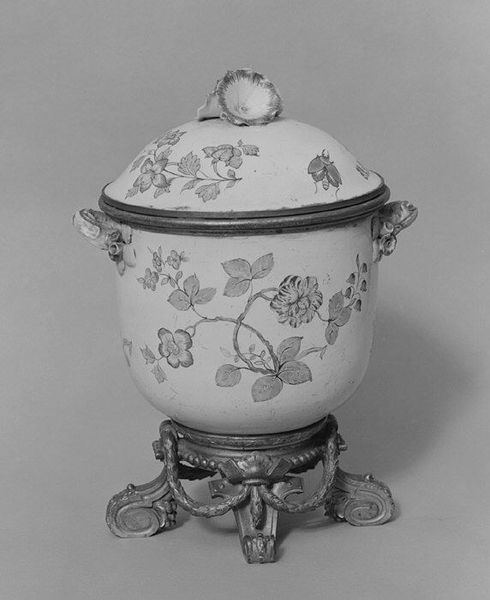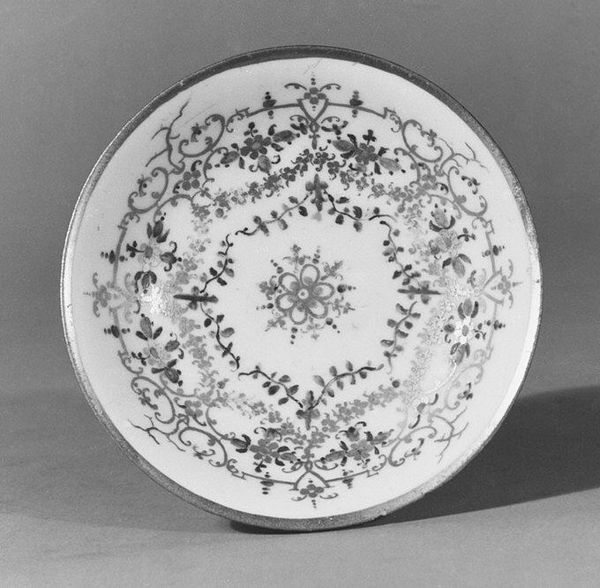
Dimensions: Diameter: 2 3/8 in. (6 cm)
Copyright: Public Domain
Editor: This exquisite porcelain snuffbox, crafted by the Royal Porcelain Manufactory between 1770 and 1780, feels incredibly delicate, and that decorative style reads as pure Rococo! What strikes me most is how the images, the flowers and cherubic figures, seem almost to float across the surface. How do you interpret the symbolism within this piece? Curator: That floating quality is key. Consider how the Rococo style, especially evident in decorative arts like this, reveled in lightness and playful themes. The cupids, of course, immediately bring to mind associations with love, pleasure, and perhaps even a touch of mischievousness, consistent with Rococo frivolity. What do you make of the placement of these figures, their relationship to the floral patterns? Editor: It almost feels like they are intertwined, reflecting, perhaps, an interconnectedness between nature and the idealized human form, which was common for classical interpretations during that period. It reminds me that snuff-taking itself was an elite ritual. Curator: Precisely! The flowers evoke natural beauty and ephemeral delights, which contrasts against the cherubs' implied sensuality and even mortality, because nothing gold can stay. These images are rendered to delight the senses of someone with both refined aesthetic tastes and wealth enough to partake of what snuff implied about status and lifestyle. It is an object dense with cultural information beyond the merely pretty! It is tempting to interpret how the user of this object may have reflected about these implications, don’t you think? Editor: I do now. So, in a way, this snuffbox encapsulates the Rococo era's embrace of fleeting beauty and pleasure while simultaneously hinting at deeper symbolic layers related to class and cultural expectation. That adds quite a new dimension! Curator: Exactly. By understanding the language of symbols and their cultural context, we gain richer appreciation for the artwork as both decorative object and historical artifact.
Comments
No comments
Be the first to comment and join the conversation on the ultimate creative platform.
